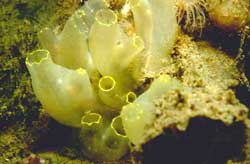Life Sciences and Chemistry
Articles and reports from the Life Sciences and chemistry area deal with applied and basic research into modern biology, chemistry and human medicine.
Valuable information can be found on a range of life sciences fields including bacteriology, biochemistry, bionics, bioinformatics, biophysics, biotechnology, genetics, geobotany, human biology, marine biology, microbiology, molecular biology, cellular biology, zoology, bioinorganic chemistry, microchemistry and environmental chemistry.

Scientists shed new light on the body’s internal clock
As mammals, our internal (circadian) clock is regulated by the patterns of light and dark we experience. But how that information is transmitted from the eye to the biological clock in the brain has been a matter of scientific debate. Scientists had suspected that a molecule called melanopsin, which is found in the retina, plays an important role.
Now researchers at Stanford University and Deltagen Inc. have confirmed that melanopsin does indeed transmit light information from the eye to th

Sea squirt DNA sheds light on vertebrate evolution
Genome of Ciona intestinalis yields new insights into the origins of complex biological systems
The streamlined genome of Ciona intestinalis, a common sea squirt closely related to vertebrates on the evolutionary tree, is providing new clues about the origins of key vertebrate systems and structures including the human hormone, nervous and immune systems.
In an article for the December 13, 2002 issue of the journal Science, an international consortium of researchers reports

Circuit points to future of nanoscale electronics
Using clusters of gold atoms and a microscopic lever, University of Toronto chemists have created a tiny circuit critical to the future of electronic engineering.
“When things are this small, they are fantastically sensitive,” says Professor Al-Amin Dhirani. “Such a circuit could make possible a bio-sensor that is activated by the reaction of just one molecule.” This has the potential for detecting important biological molecules including DNA, he notes.
Dhirani found that when the

Canadian scientists unlock secret of calcium waves in cells
Key step in process of developing targeted therapeutics to combat epilepsy
Scientists from Toronto’s Princess Margaret Hospital are able to depict for the first time how an important molecule called IP3 and its receptor interact to control calcium levels in cells, a process that is vital to normal brain function.
The study is published in this week’s edition of the international scientific journal Nature, and is a collaboration between scientists at Princess Margar

Toy choice among boys, girls a matter of monkey business
Sure Santa Claus asks boys and girls what toys they want, but, why they want them is a better question. The answer may have to do with a biological pre-wiring that influences boys’ and girls’ preferences based on the early roles of males and females, says a Texas A&M University psychologist.
It’s commonly believed that boys and girls learn what types of toys they should like based solely on society’s expectations, but psychologist Gerianne Alexander’s work with verv

Bacterium that may cause cancer is identified
A University of Sheffield scientist has isolated a bacterium that may cause cancers in those with a genetic pre-disposition to the disease.
Dr Milton Wainwright, of the University’s Molecular Biology and Biotechnology department, researched historical literature and found that, as early as the 1890s, bacteria were believed to cause cancer. Unfortunately, none of the bacteria involved in these studies were ever kept or even named, making it impossible to verify claims about their role